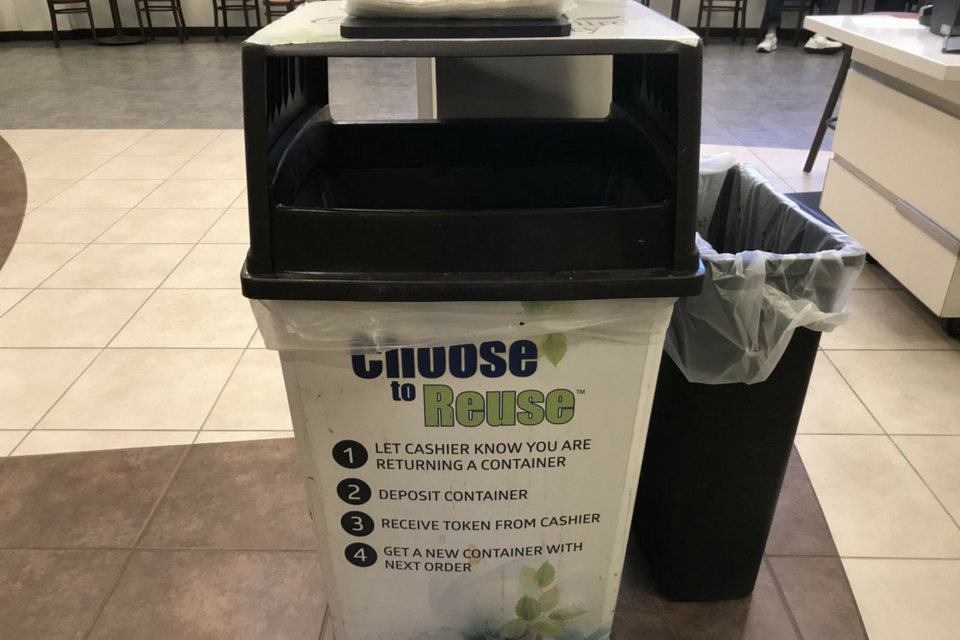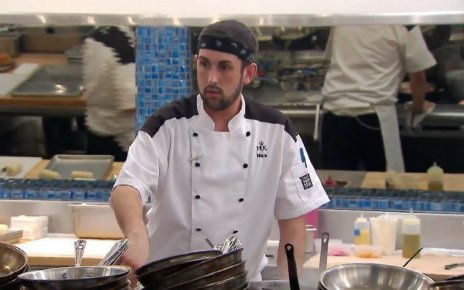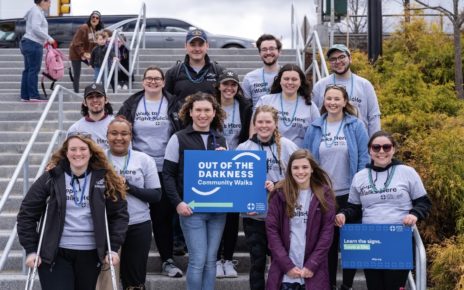Students returning to campus this semester may have noticed a change in the dining center. Dan VanAvery, the general manager of the dining center, made the decision to bring back metal utensils instead of offering exclusively plastic.
The new year means a new slate. This new year, the dining center introduced 1,200 metal pieces of each utensil, offering forks, knives and spoons. Students on campus now have the option to be environmentally friendly at every meal.
Despite this new change, this is not the only action the dining center takes to be environmentally friendly. However, most students on campus may be uninformed to the extent of how the dining center promotes environmental sustainability.
VanAvery expresses the struggle to become more environmentally friendly is hindered by the culture of the campus. One example is the “to-go” nature of our campus.
Students like Sam Barrett (‘20) highlight the issues facing the dining center’s potential efforts to be more environmentally friendly.
“I’m usually on the go, that’s just who I am. . . [grabbing a plate] usually slips my mind and [the dining center employees] usually instantly grab the boat first.”
Melanie Alibozek (‘20) also notices this pattern. “When the people give you your food, they automatically assume you want it on a boat.”
VanAvery explains, “It’s a culture shift. It even changed my staffing habits. Our first choice is to put it on a plate. We go through retraining every year, so next year we’ll go through this: grab the plate first. . . The boat is a lot more environmentally friendly than a lot of other things, however I’d rather it on a plate. When we originally started this, we never even had those boats.”
The culture of the campus is always at the forefront of VanAvery’s mind. It determines his actions as the general manager of the dining center. Every year, one of the most common trends remains to be food sustainability, but to be effectively sustainable, VanAvery sees a conflict.
“It’s not that we don’t want to be sustainable. We brought back the metal, because [we wanted to] bring back choice. But originally we had metal probably two years ago, but we did away with it, because we were going through hundreds of pieces of silverware a week. . . [Students] were throwing it away.”
He continues by saying, “We want to be sustainably responsible, because if the culture isn’t there, the students to do the right thing, we can’t do that.”
While VanAvery believes that this culture change must be “peer-driven.” he does still try to think of solutions that cater to students’ desire for instant gratification and mobility.
“It’s called Choose to Reuse. Basically you can come up to any station, ask for a green container to go, they’ll put your meal in it, you pay one time for $6. You own it. You come back. You put it in the bin. The cashier will give you a coin, you go back to where ever you want, get another one, because we clean them for you. That’s when we give you the coin, because you already paid for it, you go back to the stir fry station, they give you a green container, go back to the cashier give the cashier your coin, and you don’t have to pay for it.”
Essentially, any student could have access to reusable to-go containers that are cleaned for them. After, they can return the containers in the bins next to the cash register to be cleaned. The bins next to the registers may look like that of a trash can, but one can differentiate the Choose to Reuse bins by the posters on the side.
VanAvery continued to explain other efforts that the dining center has made to be environmentally friendly. One of the ways in which VanAvery is most proud of is their compost. The dining center began composting in 2011. While they may only compost the meal prep excess rather than the leftovers of the meal, they still compost 250 lbs a day. All of the compost is then given to the local farms they work with to use as a more eco-friendly fertilizer.
The decision to not compost the leftovers of meals mainly has to do with the handling and amount of waste.
“We have less than 160 lbs of waste a day. . . A lot of campuses will say they’re composting and what they do is put it in barrels and put it outside and it’s hauled away. That is not the most sanitary process and not one that I’m really engaged in.”
Other waste that is used is fry oil. VanAvery explained, “All of our fry oil gets recycled and uses biodiesel.” Biodiesel is an alternate source of the fossil fuel, diesel.
VanAvery also considers where the food he serves comes from. By using Stonyfield Yogurt, he supports local businesses. By using Coca-Cola products, he supports their commitment to sustainability whether it’s through their building design, their product design or recycling.
“It makes me really happy to see the changes that the dining hall is making so far!” Nejra Fazlic (‘19) says about the changes the dining center has made. Fazlic has pursued an independent study this semester focused on the challenge sustainability faces on SNHU’s campus as well as determining solutions and their implementation.
While Fazlic may agree with VanAvery that the root of the problem is the campus culture, they differ on one aspect.
“The culture of the campus plays a large role in the success of the environmental efforts made by the dining hall. It is one thing to provide our community with more environmentally-friendly options and another for people to actually follow and use them properly. . . I do believe that the dining hall should have more of an active role regardless of whether students are pushing for more environmentally-friendly efforts. . . The school has a responsibility to take the initiative and start introducing more eco-friendly options.”
However, perhaps the SNHU campus will see the dining center begin to take on more new initiatives to be environmentally friendly. It is not something VanAvery is opposed to.
“The nice thing about our environment is, every four years, there’s a whole new group of folks.”




